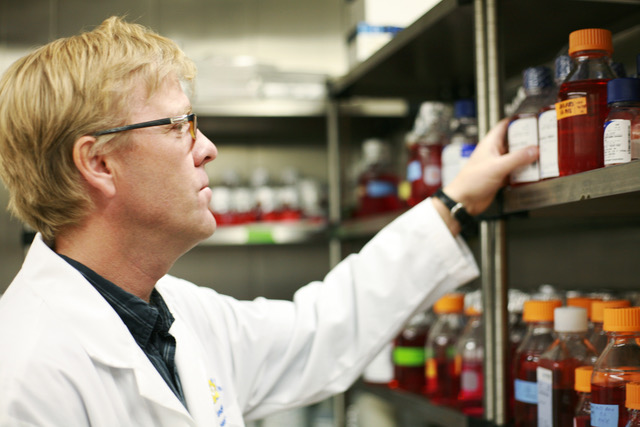
The inventor: Ron Geyer harnesses the power of nature, to fight disease
Dr. Ron Geyer is the man behind the Saskatchewan Therapeutic Antibody Resource, the Advanced Diagnostics Research Laboratory, and the Centre for Biologic Imaging Research and Development.
By Researchers Under the Scope
Listen to all episodes of Researchers Under the Scope podcast.
Subscribe to the podcast on Spotify or Apple Podcasts
But when he finished high school, Geyer was far more keen on finding ways to improve his downhill race times."I was very into skiing," Geyer said, recalling his experiments with different waxes and techniques. He landed a skiing fellowship at Simon Fraser University, with those experiments setting the stage for a lifetime of tinkering, and new inventions.
After he was sidelined by a knee injury. Geyer turned to molecular biology and organic chemistry, developing a deep fascination with the building blocks of life.
"I was interested in understanding how cell processes worked, how pathways in cells were wired and linked together," said Geyer.
Post-doctoral work took him to the Molecular Sciences Institute at Berkeley, then to the University of Florida, with a focus on synthetic biology.
But building synthetic molecules started to feel 'fairly slow and tedious' for Geyer. Upon his return to Canada, he founded a now-defunct biotechnology company focused on improving cancer treatments.
"I decided to harness the power of nature and work with biological molecules, rather than synthetic derivatives of them," Geyer said.
When he arrived at the University of Saskatchewan to accept a faculty position as a pathologist and biochemist, Geyer's focus turned to developing new therapeutic antibodies, and better techniques for diagnosing mutations and disease.
To make it happen, Geyer brought together people and technology at the Western College of Veterinary Medicine, the Saskatchewan Centre for Cyclotron Sciences, the Saskatchewan Cancer Agency, Royal University Hospital and the College of Medicine, with the goal of creating an antibody 'pipeline'.
His teams now work inside the Health Sciences building, in a fast-expanding research cluster.
"The goal was originally to repatriate all the tests we'd been sending out to other provinces," said Geyer. "More recently, we've developed our own tests."
In this episode, he explains why this work has led to faster diagnosis, better monitoring, new treatments, and a sense of hope for thousands of Saskatchewan people with leukemia and lymphoma.
"It's really exciting and really state-of-the-art," said Geyer.
"Ultimately, it serves to provide better medical care for the people of Saskatchewan, not only in terms of the availability of tests, but also in attracting physicians to the province."
